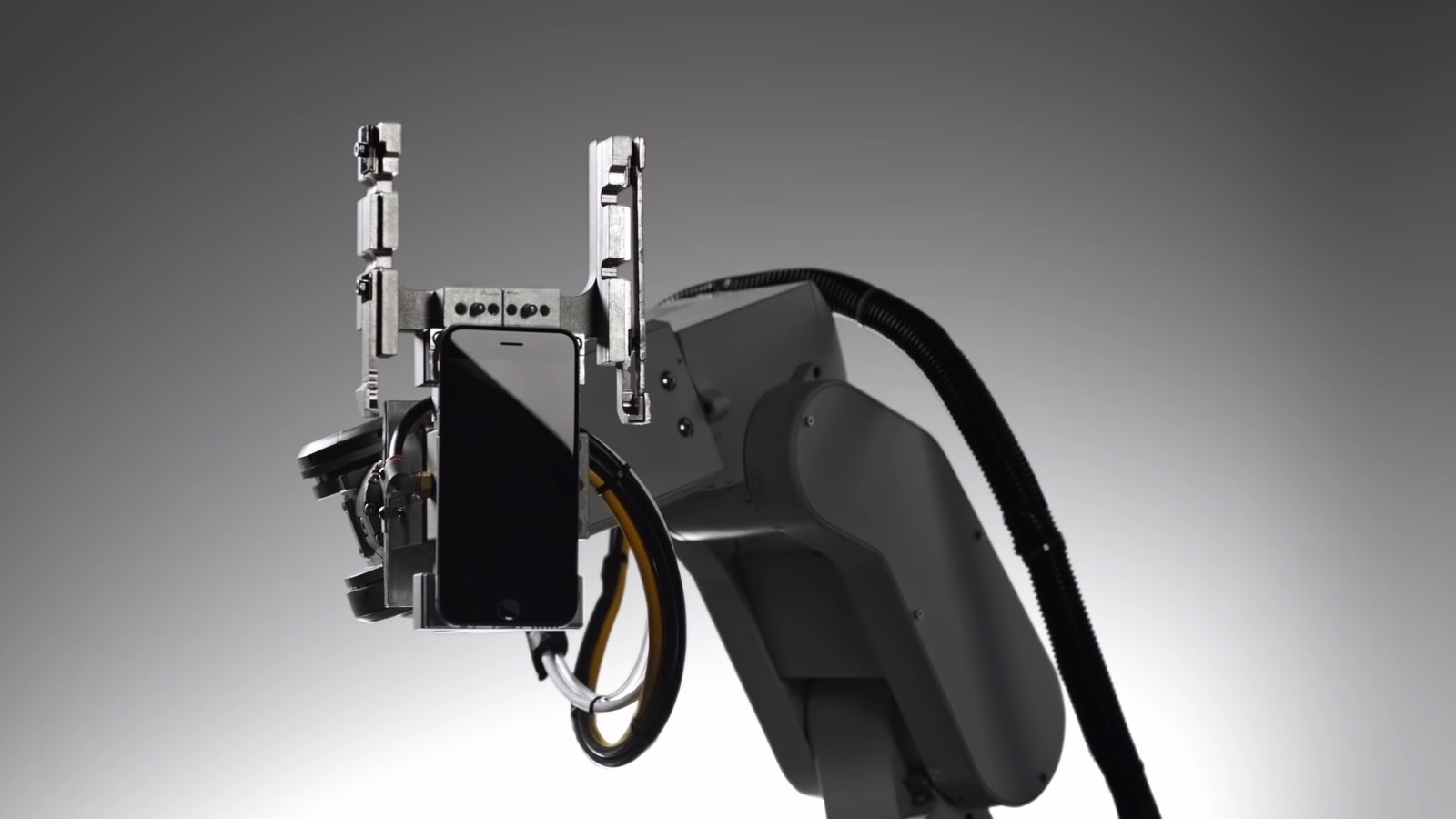The Information today published a detailed look at the difficulties Apple has faced trying to assemble its products with robots rather than humans.

The report claims that, beginning in 2012, Apple assembled a team of robotics and automation specialists at a secret lab in Sunnyvale, California to search for ways to reduce the number of workers on its production lines. However, the team is said to have quickly encountered challenges designing some of these automated systems:While many of the automated systems were abandoned or not implemented, the team apparently did have some success replacing workers with robots for simpler tasks such as testing of products like the Apple TV, Apple Watch, and iPad.
The report provides many more examples of Apple's attempts at ramping up automation, only to experience challenges. In 2014, for instance, Apple attempted to automate assembly of its since-discontinued 12-inch MacBook, but the production line apparently turned out to be more trouble than it was worth due to various issues:These issues apparently led Apple to delay the launch of the 12-inch MacBook by around six months. The notebook was released in April 2015.
The report concludes that, while Apple has not had much success using robots to assemble its products as a whole, automation can be effective for specific parts. A few years ago, Apple also introduced a robot named Daisy that can take apart up to 200 iPhone devices per hour, removing and sorting components for recycling purposes.
Article Link: Apple's Attempts to Automate Product Assembly Have Met With Limited Success
Interesting...
I took robotics in college, and one thing that was driven into us was that if a company wants to 'automate' their manufacturing process, they will very likely have to re-enginer their product so that automation can assemble it. Having disassembled a MBP, and seen how many screws hold the keyboard in, I thought the design was needlessly cumbersome, and would have to be nearly completely reworked to make it so it could be automated. (Just out of high school, I took a job at a plant that made wiring components for cars. One of the assemblies manufactured there was the steering column cluster for all of the little levers and buttons there. One process was really bizarre. It involved driving a small solid gold rivet contact into a hole near the end of a copper coated blade. The gold rivet was pretty tiny, like smaller than the ball at the end of a straight pin. And putting that little rivet into the hole, while it seemed easy, was really difficult. The machine that drove the rivet used a vibration track system to feed the installation end of the process that was supposed to make sure that all of the rivets fed to the end were right side up. Except, that wasn't possible because of the size of the rivet. They often came to the head in the track sideways, and would then be driven into the blade, ruining it, and the rivet. It was a great waste of time, and the wastage of the process was pretty large. The amount of complete assemblies that failed final testing was probably due to the failure of that one rivet. It routinely fell out of the blade. I can only image the number of cars that had failed switch assemblies after being sold. Seeing how that assembly was designed, and the ridiculous mess they had on crap 'engineering', I was just shocked)
So, Apple apparently wanted to take their as-is assembly process and throw robots at it, and that's just not how it works. Find an easier way to attach the keyboard. Find a more automation friendly way to assemble the device(s), and automation will work. It can work. Hearing that those numerous screws were causing issues, I can only wonder why (see above, gold rivet)... I can't even see a way that a human could do those small screws endlessly in a day. That seems to be a hell of a convoluted way to attach a keyboard to the bottom of the case. There are alternatives, but they would likely not have a lot of long term success. Glue would fail over time, and 'staking' them into the aluminum could be hard to insure the quality of the crimps, but both would be a lot easier than having mechanical 'hands' handle those many tiny screws.
They need to spend a lot of money, time, and thought in how much they are willing to accept to exclude humans from the manufacturing process. I find it ironic that they build, or have them built, in countries where the going labor cost is a scant fraction of the rate in America, and they are STILL trying to screw workers and 'save labor costs'. Its almost sad... Humans are a liability, and yet they depend on humans to buy their goodies. *shrug*


